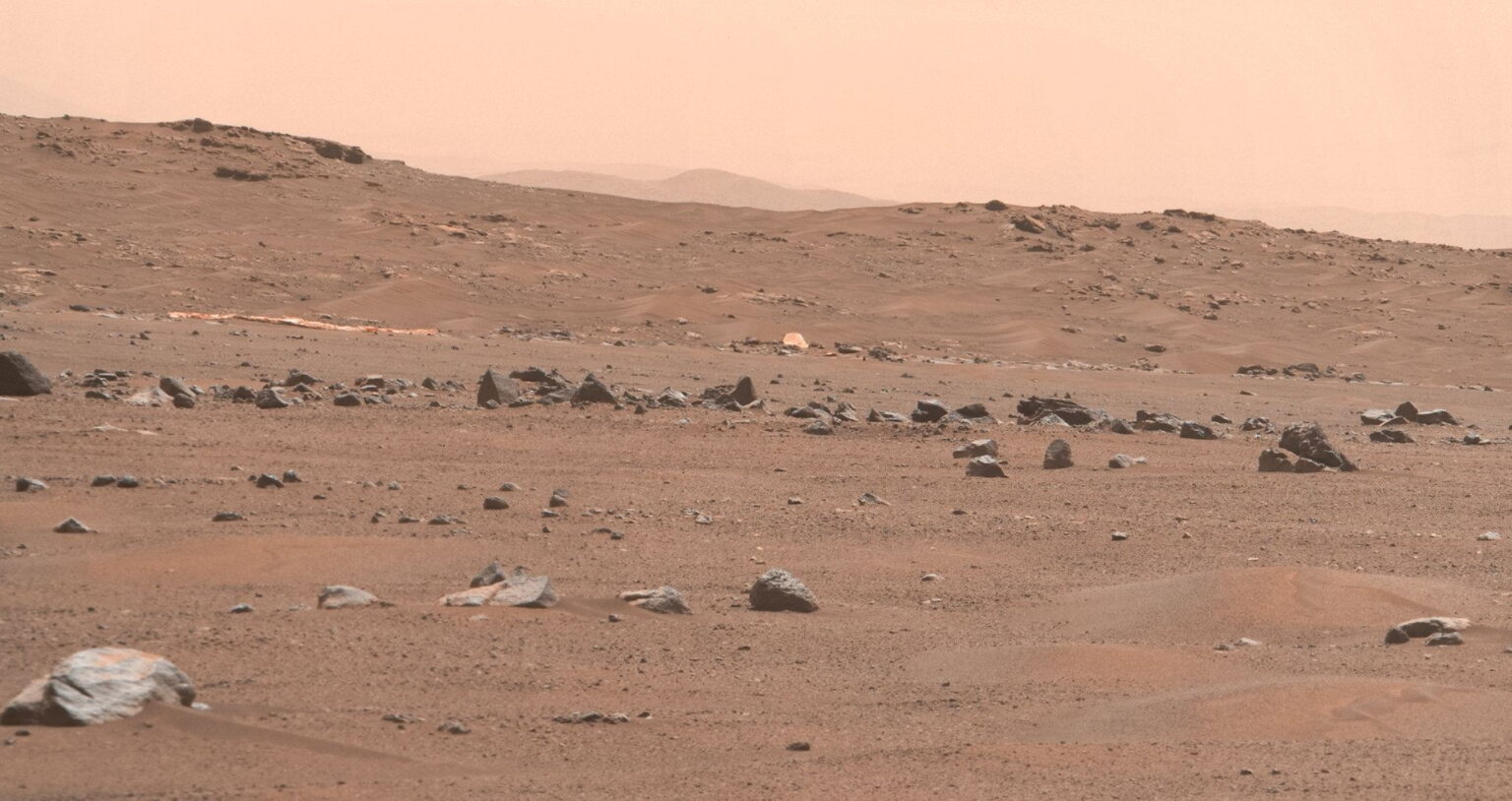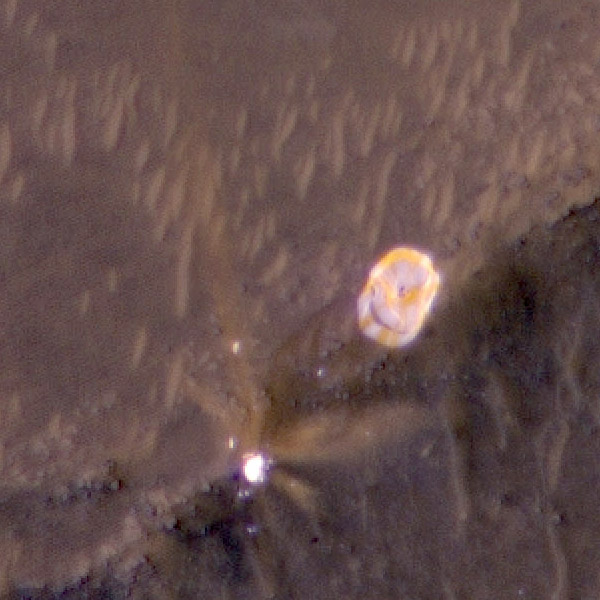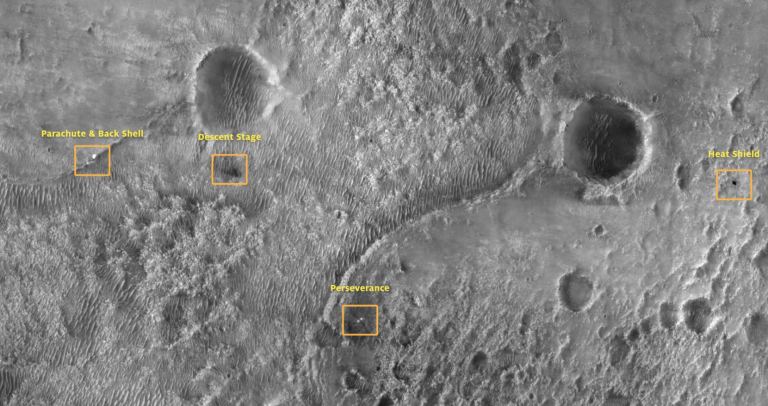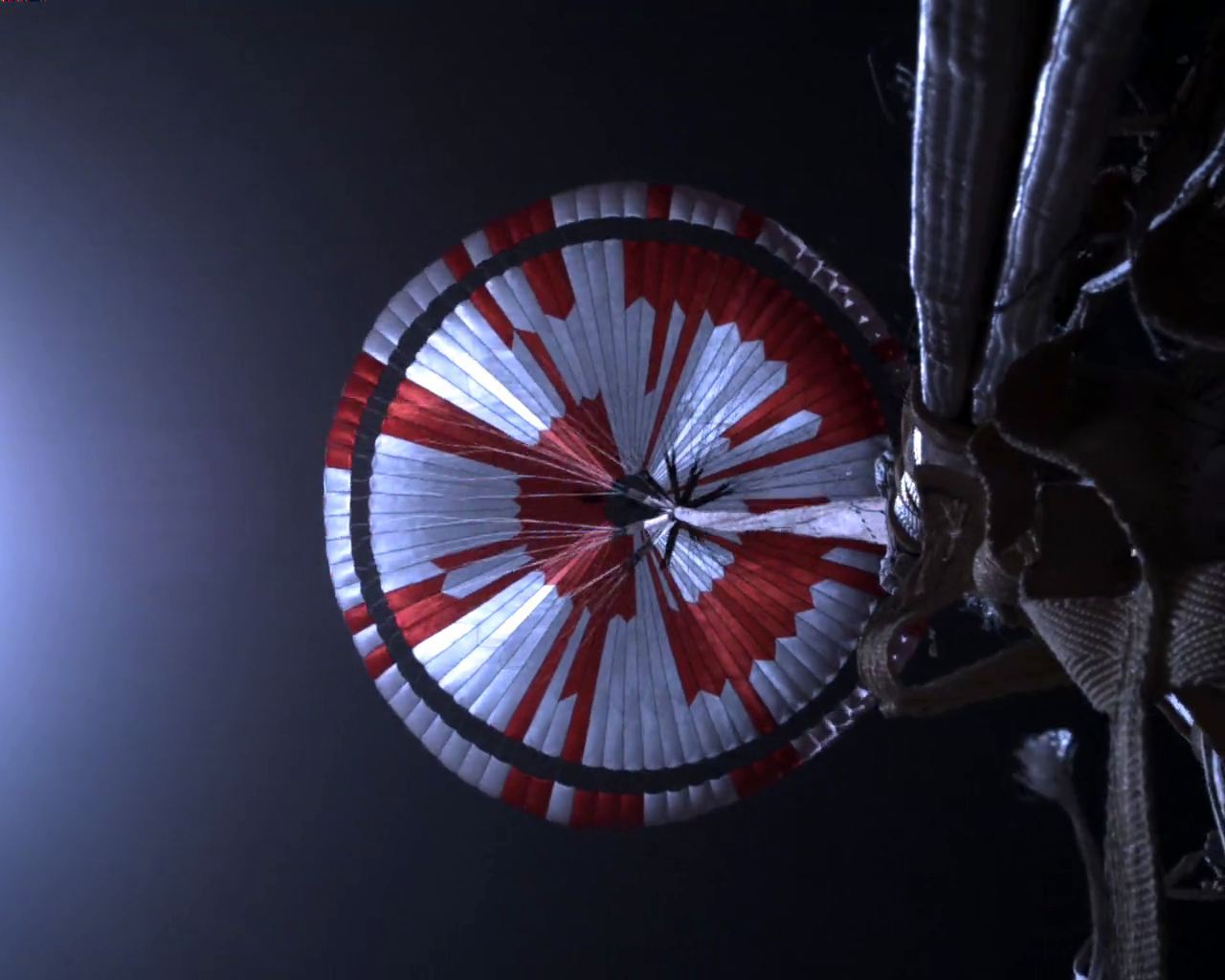13 months after the Perseverance rover landed on Mars (February 18, 2021), it managed to detect parts of the Mars 2020 landing system. This system safely delivered the rover to the surface of the Red Planet. The parachute and the body of the Skycrane landing platform got into the lens of the MastCam-Z camera. The image was taken on Sol 404, or April 6, 2022 Earth time.

At the beginning of its mission, Perseverance made a short trip to take pictures of the remnants of the landing system. Then the rover moved to the large area of Southern Seita in the Jezero crater to study the samples. During the return to the dried delta, the rover drove past the landing area. Along the way, it managed to find the place where the parachute landed. The parachute was dropped during landing so that the Skycrane platform could lower the probe to the surface on its wheels.



Record Achievements
Exploring the Southern Seita at the beginning of the mission was a conscious choice of the NASA team. They planned that later the rover would have to return to get to the next stage of the mission. Perseverance is currently moving towards the next goal — an area similar to a large river delta. At the same time, the spacecraft is moving much faster than any other previous rover. Although its speed is less than 0.2 km/h, Perseverance uses the auto-navigation function to independently plot the shortest path. This helps it to move relatively quickly on the harsh surface of Mars. The rover moves exclusively during the daytime for several hours.
Sol 404: Parachute Found.@NASAPersevere Sol 404 pic.twitter.com/sExaxitYHu
— Kevin M. Gill (@kevinmgill) April 10, 2022
Perseverance broke the records of all previous rovers for the distance traveled in one day. It managed to overcome 319.8 m on 351 sol. Curiosity made several trips over a distance of more than 100 m, but none of them exceeded 200 m. This was partly due to the more rocky terrain. Opportunity, which landed back in 2004, landed on terrain with very flat areas, which allowed it to overcome up to 228 m in one day.
Follow us on Twitter to get the most interesting space news in time
https://twitter.com/ust_magazine

